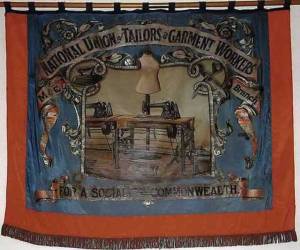The People’s History Museum recently hosted the launch of the Arts and Humanities Research Council (AHRC) Supported Tailored Trades Network, we asked the network coordinators Dr Nicole Robertson and Dr Vike Plock to write us a short blog post about the launch and the network.
How did women in Manchester use home dressmaking to access fashionable clothes?
What role did the tailored trades play in the lives of young working-class women?
How are textile items preserved for future generations?
These were the themes of an event held at the People’s History Museum on Saturday 29 June. The event provided an opportunity to hear Dr Charlotte Wildman (University of Manchester) speak on working-class women’s fashion and Leanne Tonkin (Textile Conservator at the People’s History Museum) present on the work undertaken by the Textile Conservation Studio.
This event launched the ‘Tailored Trades: Clothes, Labour and Professional Communities 1880-1939’ project. A virtual exhibition of items associated with the project, from the collections of the People’s History Museum, Working Class Movement Library and National Co-operative Archives, can be found at http://tailoredtrades.exeter.ac.uk/
Useful Blouse and Afternoon Frock
(June 1933) pattern printed in Labour Woman magazine
Most working-class women sewed their own clothes for their families. Labour Woman was the Labour Party’s women magazine for 58 years. The magazine began by covering the fight for the extension of the voting franchise to women.
The ‘Tailored Trades: Clothes, Labour and Professional Communities 1880-1939’ project is a series of events organised by Dr Vike Martina Plock (University of Exeter) and Dr Nicole Robertson (Northumbria University). Partners include the PHM and the Bishopsgate Institute. The project is funded by the Arts and Humanities Research Council. Details of forthcoming events can be found at: http://tailoredtrades.exeter.ac.uk/events/

National Union of Tailors and Garment Workers (NUTGW) M&C Branch banner (About 1939)
For those working in the textile trade, the profession could be one where employees were poorly paid and expected to work long hours. A number of trade unions were formed to try and improve the conditions of employees in the textile trade and to represent their interests. M&C stood for Mantle and Costume, and this banner would have cost about £93 at the time.
